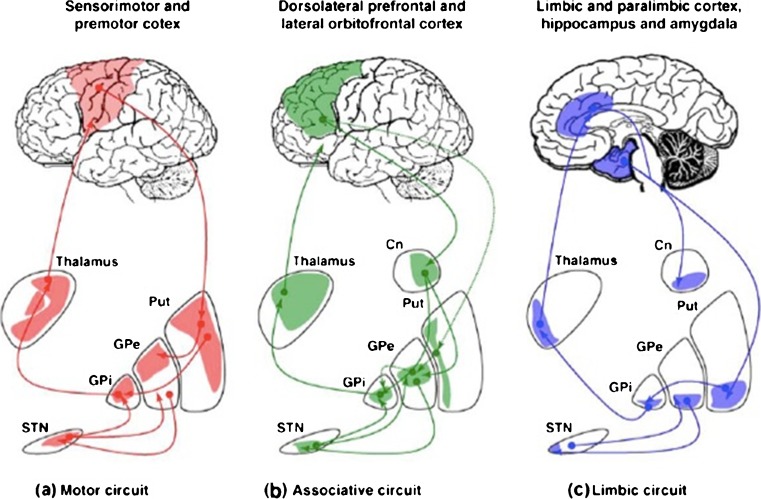Fig. 1.
Neurocircuitry: cortico-striato-thalamocortical loops. Pathways in motor, associative, and limbic circuitry. (a) Motor circuit. Neurons from the sensorimotor cortex project to the posterolateral putamen (Put), which, in turn, projects to the posterolateral region of the target nuclei: (i) the direct circuit to the globus pallidus pars interna (GPi) and (ii) the indirect circuit connecting the posterior putamen (Put) to the globus pallidus pars externa (GPe), the subthalamic nucleus (STN) and the GPi. The GPi is the primary output nucleus of the basal ganglia to the cortex via the ventrolateral thalamus. (b) Associative circuit. This circuit originates in the dorsolateral prefrontal and lateral orbitofrontal cortices; projections include the striatal caudate nucleus (Cn) and anteromedial portion of the Put, and subsequently projections to the dorsomedial region of the GPi, and anteromedial portions of the GPe and STN. These, in turn, project onto the GPi and back to the cortex via the ventral anterior nuclei of the thalamus. (c) Limbic circuit. Here, the hippocampus, amygdala, paralimbic and limbic cortices project to the ventral striatum (ventral portion of the caudate and putamen, including nucleus accumbens). The ventral striatum projects to the limbic portion of the GPe, medioventral STN, ventral GPi, and to the cortex via the mediodorsal nucleus of the thalamus. Reproduced with permission from Krack et al. [10]

